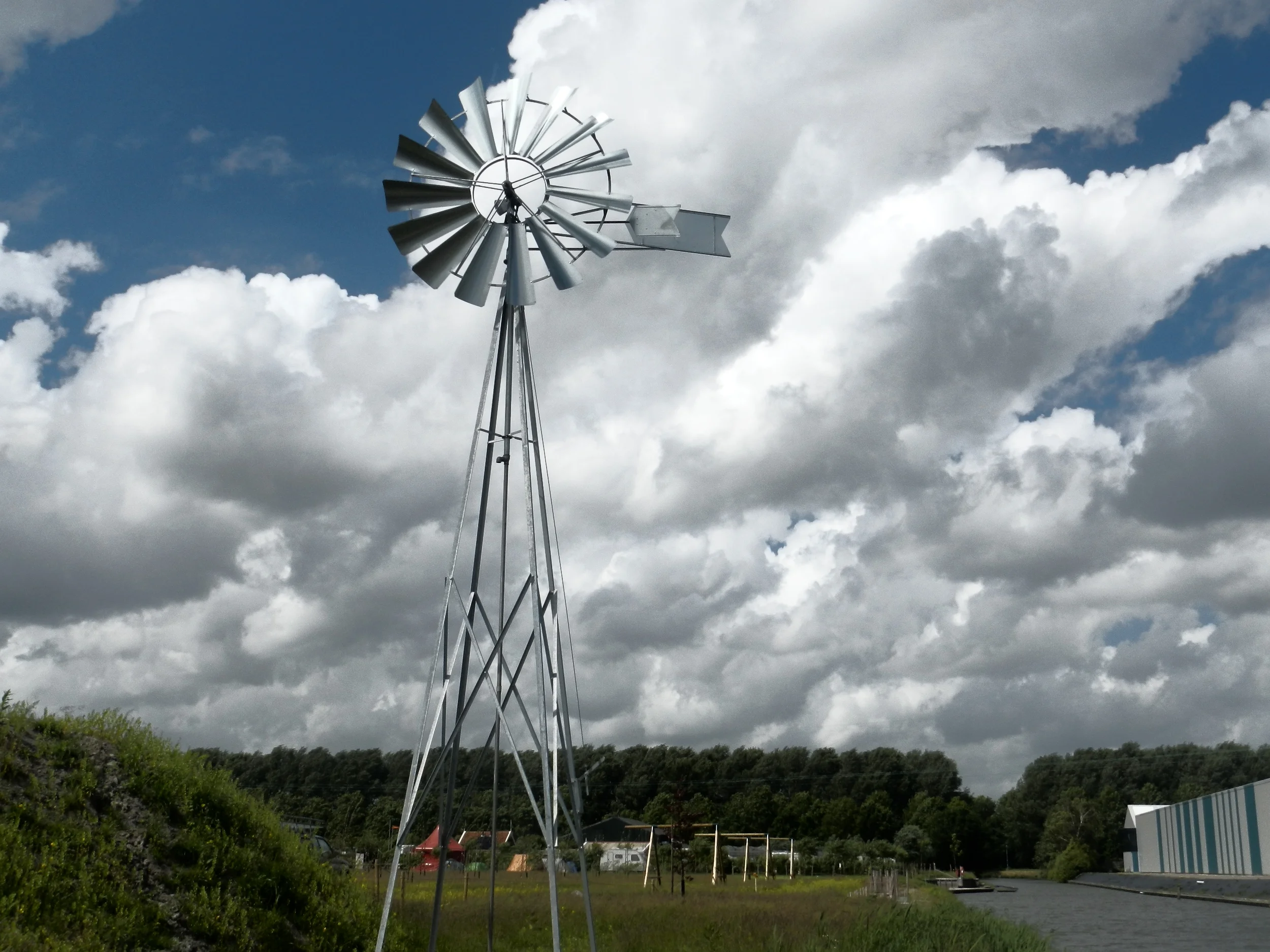Wetland Assisted Treatment Solution (WATS)
Wetland Assisted Treatment Solution (WATS) is a self-contained artificially created wetland remediation system constructed within the subsurface ground to treat contaminated groundwater. The exterior walls are built from impermeable material to create a treatment space while the interior cavity is layered with permeable media, vegetation and vertical partitions to control the treatment and movement of contaminated water. A wind turbine is used to provide all the energy needs to pump the groundwater into the constructed wetland where it passes through various media filled with bacteria used to degrade and destroy the contaminants before the water is discharged back into the ground. No other equipment or energy requirements are needed for the system, which results in it being a net-zero remediation management solution.
Each WATS has to be a site-specific design since wind frequency, speed and direction along with contamination level, type and depth are all factors that will influence the effectiveness of treatment. Since the system is responsible for residual and rebound management pumping rates will need to be determined in order to neutralize the contaminants, stop the spread and reduce concentration levels.
Case study
The test site is located in Amersfoort, Netherlands at a rail yard owned by the Dutch Railway. Approximately 65,000 m3 of soil and 21,692 m3 of groundwater are contaminated with chlorinated solvents - TCE and PCE. To manage the contamination, a dig and dump approach was used to remove all the contaminated soil in 2007. In 2009, a Pump and Treat (PAT) system consisting of four deep wells was employed to treat the groundwater. After two years of conventional PAT, the concentration levels in the groundwater fell low enough that the cost to continue with this type of treatment was not justified. As a result, WATS was designed and implemented in 2013 to manage the remaining amount of contaminated groundwater that was still present as well as to treat any rebound contamination that occurred.







